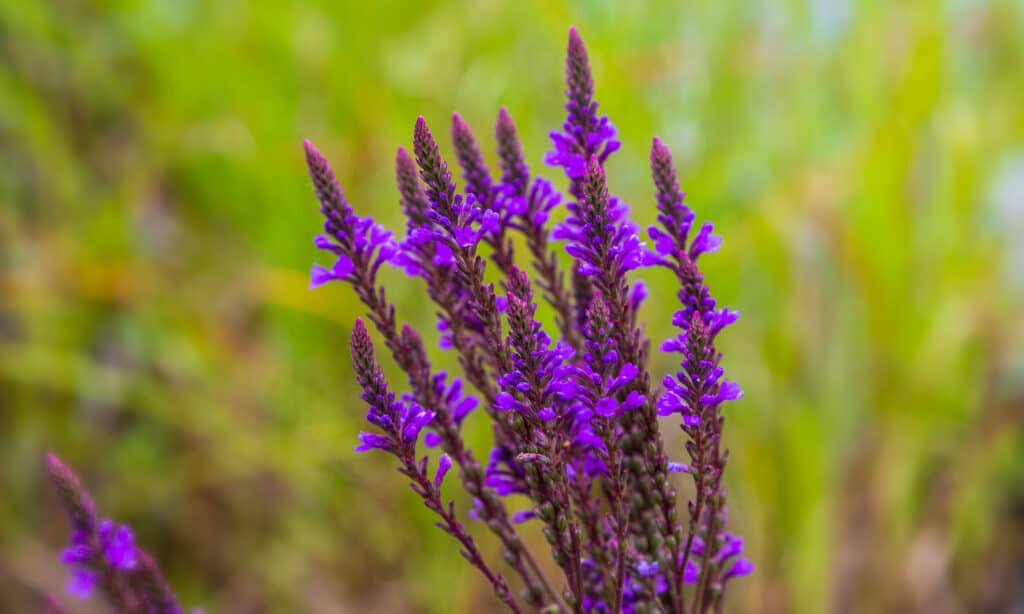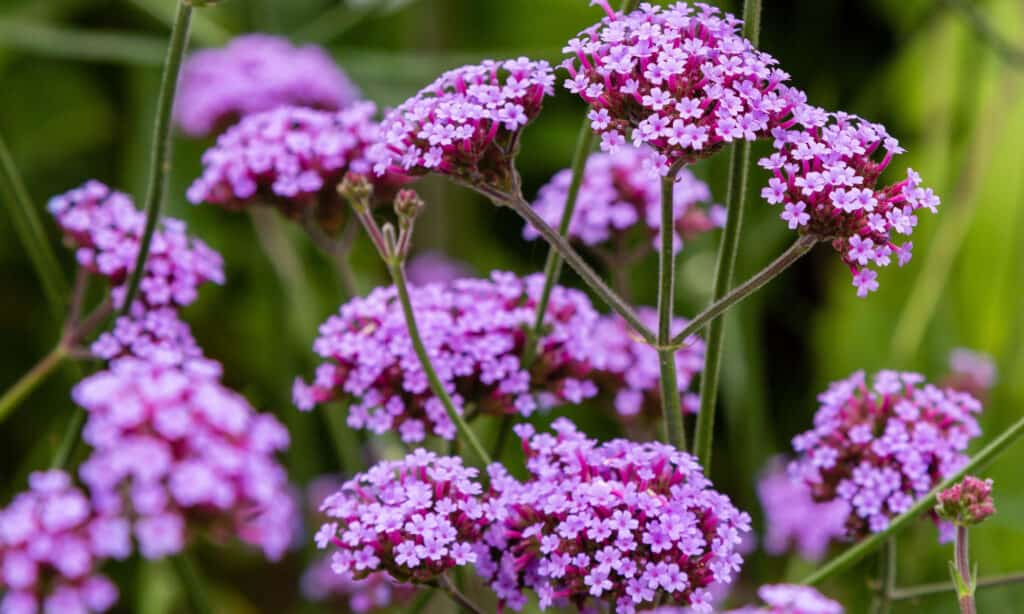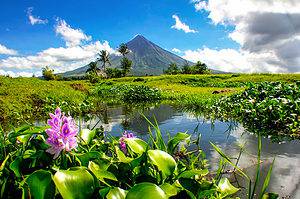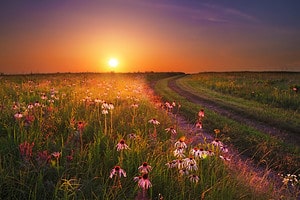Verbena is a pretty flowering plant that fills a garden border or a container with summer color. It’s a very popular plant, and there are many cultivars to choose from. But is verbena perennial or annual?
Let’s dive in below to find out!
Verbena: Perennial or Annual?

©Danny Hummel/Shutterstock.com
Verbena is perennial or annual, depending on its type. There are many perennial cultivars that rebloom each year and lots of long-flowering annuals too!
The plant’s label will indicate what type of verbena you have, but if it’s an inherited plant, just let it grow for a year and see what happens. If it re-emerges in spring, you have a perennial verbena.
What Is Verbena?
Verbena is a genus of woody, herbaceous flowering plants in the Verbenaceae family. There are at least 150 species of verbena that include both annuals and perennials.
It’s also known as simpler’s joy or vervain (most commonly in Europe). Verbena officinalis is the common verbena that’s native to Europe, but there are lots of other species native to Asia and the Americas too.
Verbena has opposing leaves and stems that are often hairy. It flowers on tall spikes measuring several feet above the foliage clump. Flowers have five petals, and although they are usually blue, botanists have created cultivars with pink and white flowers.
Verbena is drought tolerant and very popular in cottage-style gardens. It’s a nectar-rich butterfly magnet too. Most pollinators love verbena, including hummingbirds and the hummingbird hawk moth!
What Does Perennial Plant Mean?
A perennial plant is one that grows back every year. Many retain foliage, remaining evergreen in warm climates, but in cooler climates, perennials tend to die back. Either way, perennial plants re-emerge in their season of interest.
Verbena Was Used As Medicine!
Verbena has been associated with traditional medicine as far back as the ancient Egyptians and Greeks. It was a herb of witchcraft and healing in medieval Europe.
Ancient Greek Pliny the Elder described how magi surrounded verbena with iron circles, and throughout Europe, verbena’s common name is associated with iron. For example, verbena is called ‘true iron-herb’ in Germany – Echtes Eisenkraut!
Coming right up to date, verbena oil is an ingredient in Bach’s Rescue Remedy and is regularly studied for its antioxidant properties.
Verbena has a long history of human usage.
Does Verbena Come Back Every Year?
Perennial verbena comes back every spring, but annual verbena does not. Annual verbena dies off after it has produced seeds and the weather cools.
Expect a perennial verbena to die back to almost nothing in winter. This hardy plant disappears to a root ball below ground level in the autumn and grows back to its full height in summer. It’s best to place a marker next to verbena as a reminder of where it is, they can get lost in garden redesigns!
Which Verbena Is Perennial?
It can be difficult to tell the difference between perennial and annual verbenas. Here’s how you can figure it out.
Usually, annuals are short, only reaching 18 inches tall, whereas perennial verbenas can reach several feet tall. There’s even a species of trailing verbena which is a perennial. Trailing verbenas are usually perennials.
Moss verbenas are much smaller. They are compact, spreading plants with small leaves. They are perennial but are short-lived and usually grown as annuals. In warm zones, they live longer and flower across the summer. If you live in a cold zone, it’s usually best to choose annual verbenas because the perennials don’t like too much wetness and frost. Without some attention, such as horticultural fleece or a spot in the greenhouse, they might not make it through the cold months.
Does Verbena Need To Be Cut Back?
Yes, it’s best to cut back perennial verbena in spring. Take 1/3 of the old growth off to promote healthy new growth and more flowers. If you leave the flowers to turn into seedheads, they attract small seed-eating birds and create safe hiding plants for hibernating insects.
How Do You Make Verbena Bushy?
Perennial verbena is a naturally tall and thin plant that looks good, waving in the breeze above other bedding plants. To make them bushier, cut back 1/3 each spring and use a good-quality fertilizer to boost nutrients.
Trim back excess growth in the growing season to encourage side shoots, and the verbena will begin to bush out.
Does Verbena Survive Winter?
Verbena can survive winter in zones 3a to 11, depending on the species. Here are the perennial verbenas growing zones:
- Common Verbena (V. officinalis): Native to Europe and hardy in zones 4-8
- Blue Vervain (V. hastata): A North American species hardy in zones 3-8
- Moss Verbena (Glandularia pulchella): South American and hardy in zones 5-8
- Moss Verbena (V. tenuisecta): A South American native that’s hardy in zones 7-9
- Purpletop Verbena (V. Bonariensis): A South American native hardy in zones 7-11
- Rigid (or Rough) Verbena (v. rigida): Another South American native that’s hardy in zones 7-9
- Trailing verbena (Glandularia canadensis): An American native that’s hardy in zones 5 through to 9
How To Grow Verbena

Verbena is best grown under full sun.
©Flower_Garden/Shutterstock.com
The best way to grow any type of verbena is in full sun. Verbena needs at least 6 hours of sunshine a day and really struggles to flower in shade. Another aspect they love is well-drained soil. Soil should be acidic to neutral, but verbena is tough and will make the most of any dry soil in full sun.
Containers are a great way to grow verbena because they enjoy the well-drained conditions. Pop some on a sunny balcony or deck for lots of color and butterfly visitors!
Verbena Is Perennial And Annual!
It’s not very satisfying when there isn’t a straight answer, but verbena is both an annual plant and a perennial, depending on its species. Most native species are perennial, and the cultivars annuals, but there are exceptions!
Either way, verbenas are beautiful airy plants that provide nectar and seeds to our wildlife. They are a great way to support the local ecosystem. Everyone should grow verbena – but don’t worry about encircling it with iron!
Up Next
The photo featured at the top of this post is © Flower_Garden/Shutterstock.com
Thank you for reading! Have some feedback for us? Contact the AZ Animals editorial team.






